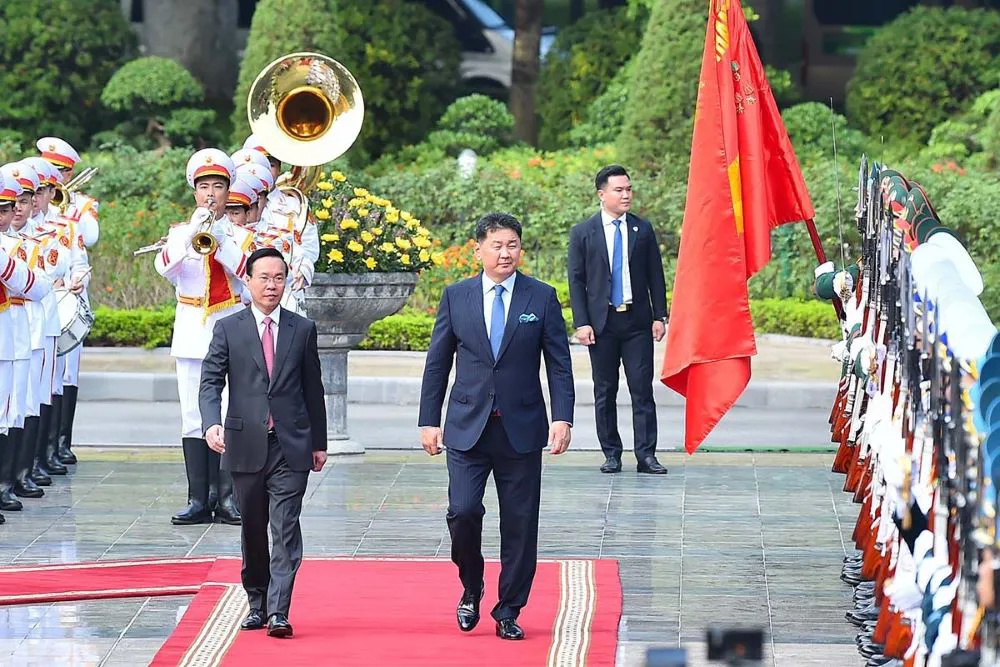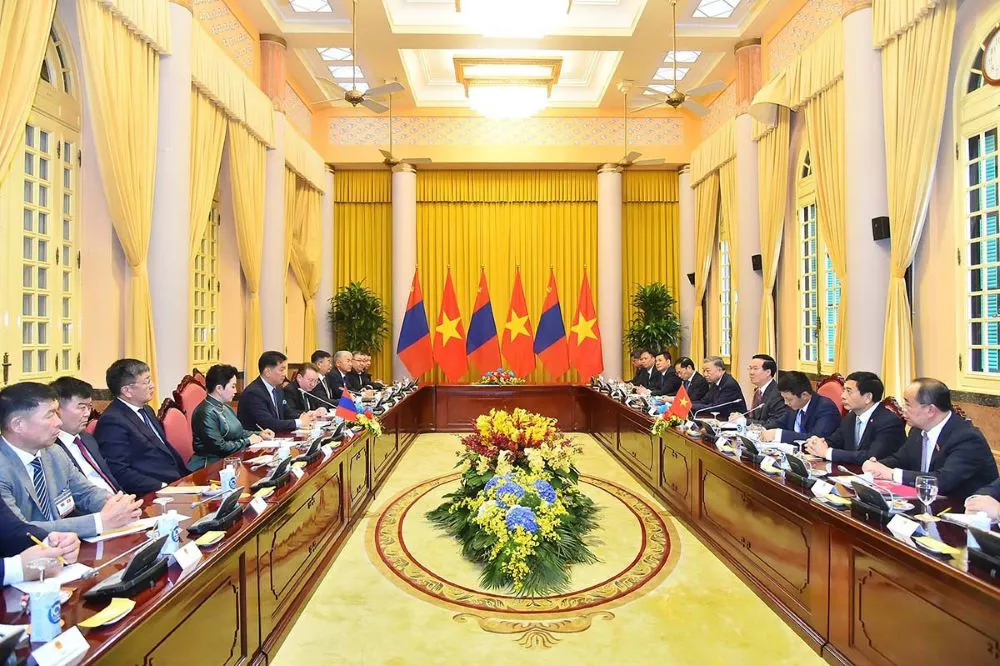Vietnam: Important partner in Mongolia’s Third Neighbor policy
Vietnam is viewed by Mongolia as a crucial entry point into ASEAN, a market with 700 million people.
Mongolian leaders affirm that Vietnam is the leading partner in its foreign policy for the Southeast Asia region and central to its diplomacy, mainly the Third Neighbor policy.
Vietnamese Ambassador to Mongolia Doan Khanh Tam shared the view with local media on the ongoing visit paid by Mongolian President Ukhnaagiin Khurelsukh at the invitation of Vietnamese counterpart Vo Van Thuong.
Third Neighbor policy is Mongolia’s main diplomacy on building relations with other countries beyond two neighbors, Russia and China.
As such, Mongolia considers Vietnam an important gateway to enter ASEAN – the market of 700 million population.
| Vietnam's President Vo Van Thuong (L) and Mongolian President Ukhnaagiin Khurelsukh (R) in Hanoi on Nov 1. Photos: Thuy Nguyen |
As a result, Vietnam and Mongolia today [November 1] signed a number of agreements, including those on strategic research between Vietnam’s Ministry of Public Security and the National Security Council of Mongolia; information exchange and immigration management between Vietnam’s Ministry of Public Security and the Ministry of Justice and Internal Affairs of Mongolia; and a memorandum of understanding between Vietnam’s Industry and Trade and the Minister of Food, Agriculture and Light Industry of Mongolia.
The agreements are expected to boost cooperation in security, trade, immigration, and visa exemption for passport holders.
According to Ambassador Doan Khanh Tam, those agreements would be important legal foundations to remove barriers facing cooperation in agriculture, extractive industries, and tourism among others, contributing to balanced two-way trade.
| Overview of the meeting between the two delegations. |
Mongolia is a vast country with an abundance of grazing livestock and rich mineral reserves, including minerals that the world desperately needs. These could be areas where the two nations work together more closely.
These will be potential areas of greater cooperation between the two nations, particularly in terms of developing business partnerships in the rare earth, mining, production of electric vehicles, and green economy.
In the meantime, Vietnam, which boasts a market of over 100 million people, is experiencing a golden age of population growth, with the middle class expanding quickly. Vietnam has signed more than 17 free trade agreements (FTAs), including new-generation FTAs like the CPTPP and EVFTA, giving Mongolian companies access to both the large global market and the ASEAN market.
The visit is especially significant because it takes place one year before the two nations celebrate their 70th anniversary of establishing diplomatic relations. After a decade since President Elbegdorj’s 2013 visit, this is the fourth official state visit by the Mongolian head of state to Vietnam.
Furthermore, there is a strong bond between the two nations' localities, as evidenced by the twin cities of Hanoi and Ho Chi Minh City. Ulaanbaatar, the capital, is paired with Ho Chi Minh City. Hoan Kiem District, Hanoi is twinned with your Bayanzurkh District; Hoa Binh Province and Tuv Province; Dak Lak Province with Orkhon Province; Thu Duc City with Chingeltei District; and the upcoming pair of Phu Tho Province and Darkhan-Uul Province.












